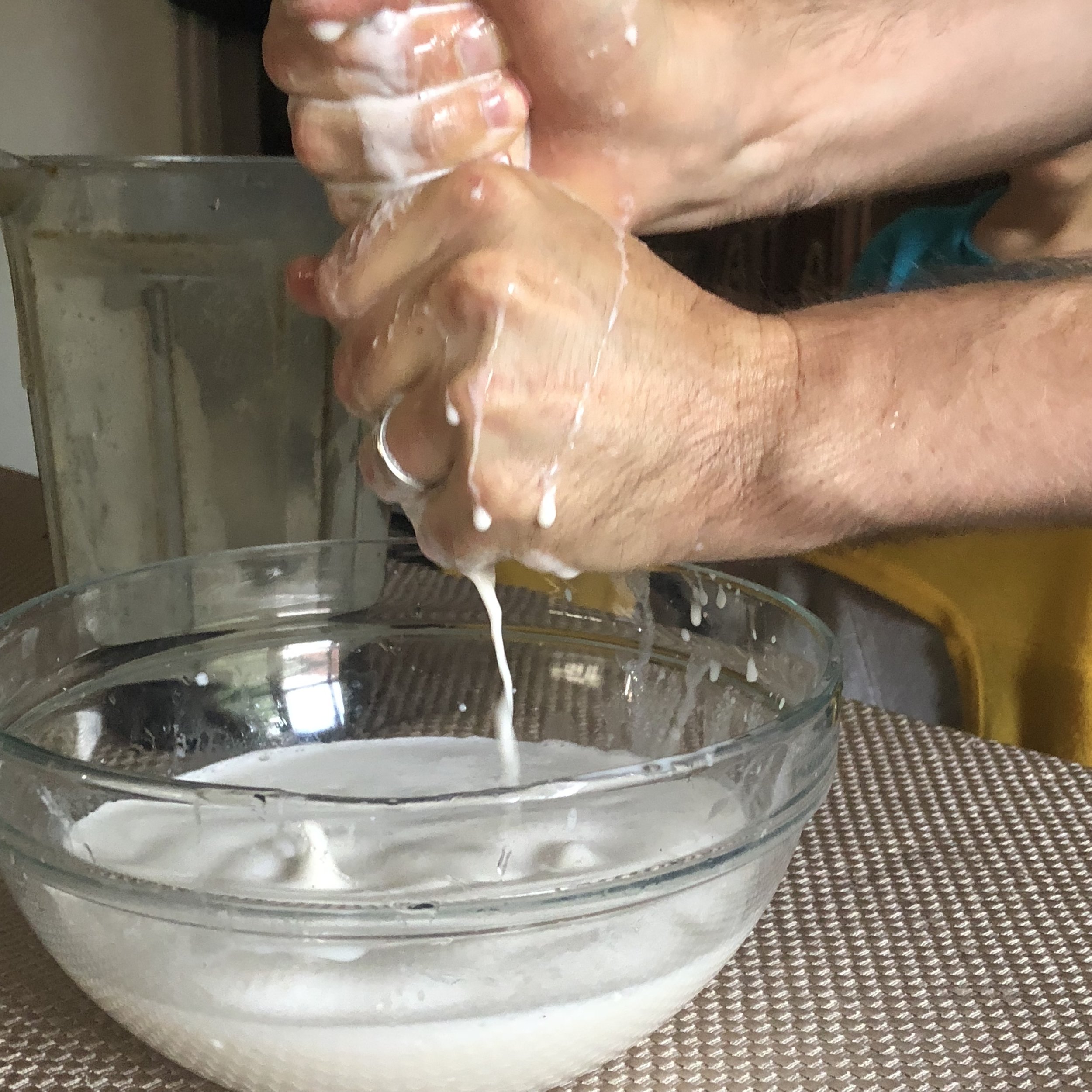Going Nuts with Almonds and Walnuts
/ACTIVE PREP TIME: 1 MIN
PASSIVE PREP TIME: 8 HRS TO SOAK (OVERNIGHT) + 24 HRS TO DEHYDRATE
My family and I have become connoisseurs of nuts. We eat them raw as snacks, make non-dairy milk out of them and even pulverize them into non-dairy cheeses, dips and sauces. While they are known to be not only delicious but also very nutritious, I’ve learned that there is an art to properly preparing them to unlock that nutrition.
Let’s start with almonds and walnuts.
Almonds are botanically stone fruits (like cherries, apricots and peaches), so the nut that we eat is technically the seed of the almond fruit. They are also high in monounsaturated fats, just like olive oil, which is associated with a reduced risk of heart disease, among many, many other benefits.
Walnuts are true nuts (not stone fruits like almonds). They look like little brains when you crack them open! They are the only nuts that contain high amounts of omega-3 essential fatty acids (alpha-linolenic acid or ALA).
We purchase our almonds and walnuts from Nicholas Family Farms in Orange Cove, California. They are tasty & delicious and come raw, organic and unpasteurized.
Why Does It Matter That They Are Not Pasteurized?
Almonds labeled “raw” and purchased commercially, whether at your local kosher market or supermarket chains like Trader Joe’s, will almost certainly be pasteurized. (As far as I can tell, this law does not yet apply to walnuts.) Nearly all almonds grown in the United States, Canada and Mexico are either steam heat pasteurized or fumigated with propylene oxide (PPC) gas, according to a law put into place in 2007 (sources: World’s Healthiest Foods and The Almond Board). Steam-heating almonds may result in nutrient loss due to the heat, while fumigating with PPC gas may leave residue from this probable human carcinogen. One of the two exemptions is for growers that sell almonds directly to customers at local farmer's markets, in limited quantities. So the best place to purchase truly raw almonds is by asking your local organic almond farmer if they pasteurize their nuts.
What’s The Best Way To Consume Almonds And Walnuts?
You might have come across people who soak their nuts before eating them. This is popular in Middle Eastern cultures. There is a good reason for doing this. The hull (the outer coating) of many nuts (as well as the bran of seeds and grains!) contains a substance called phytic acid. This substance functions as an “anti-nutrient” that inhibits absorption of minerals such as calcium iron and magnesium by the body because bodies lack the enzyme to metabolize it. Soaking the nuts deactivates the phytic acid and activates the nutrients.
I usually take a cup each of almonds, walnuts (and sometimes pecans), throw them in a 64-ounce Mason jar with filtered water, and soak overnight (or for at least 8 hours). Then I rinse and shake a few times to remove the murky brown gunk (you want to throw this away).
Finally, I place them on a dehydrator sheet and dehydrate at 118°F for 24 hours. If you don’t own a dehydrator (which I strongly recommend purchasing; I own an Excalibur), you can use the oven at the lowest setting (ideally 150-170°F or lower) for 6-12 hours. Dehydrating at 118°F preserves the enzymes in the nuts and keeps them “raw”, while higher temperatures render them slightly “cooked”. This process is also more flavorful than unsoaked nuts.
Once they have been activated and dehydrated, they need to be stored in the refrigerator in an air-tight container so they don’t go rancid from the heat in your kitchen or pantry. I add Thompson raisins to the nuts to make a simple trail mix for my family to munch on while at school, at home or on a road trip.
The Health Benefits Of Preparing Your Own Snacks
Having kids at home and tending to busy work lives can make it difficult to find the time to prepare nutritious food. When you prepare your own food, though, you also gain the health and nutritional benefits that are otherwise lost through processing. Preparing nuts is a simple and effective way to shift from consuming processed snacks to going back to the source of best nutrition.























